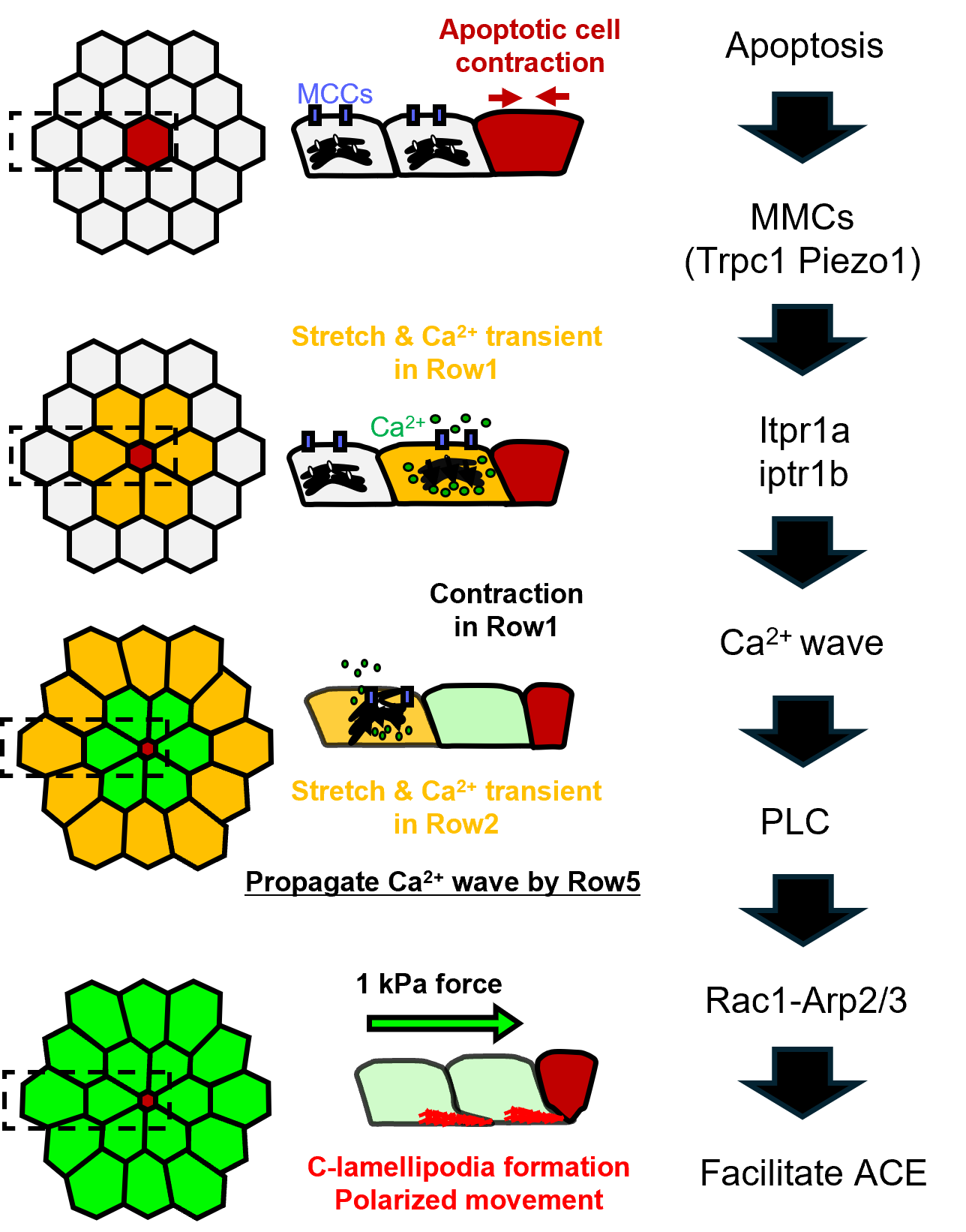Research outcomes
Revealing a Fundamental Mechanism of Tissue Homeostasis
– Cell Death Induces a Propagating Mechanical Calcium Wave –
Revealing a Fundamental Mechanism of Tissue Homeostasis
– Cell Death Induces a Propagating Mechanical Calcium Wave –
A research team led by Associate Professor Takaaki Matsui from the Division of Biological Science, Life Science Collaboration Center, and Medilux Research Center at Nara Institute of Science and Technology (NAIST), together with Professor Yasumasa Bessho (Biological Sciences and LiSCo, NAIST), and Specially Appointed Assistant Professor Sohei Yamada (currently Assistant Professor, Hirosaki University), Assistant Professor Ryohei Yasukuni (currently Associate Professor, Osaka Institute of Technology), Professor Yoichiro Hosokawa from the Division of Materials Science at NAIST, and Professor Yasuyuki Fujita from Kyoto University, has uncovered a new mechanism of apical extrusion of unnecessary cells, leading to maintain tissue homeostasis.
In epithelial tissues that cover the surface of our body, damaged cells are removed through a programmed cell death process known as apoptosis, thereby maintaining tissue integrity. The process in which apoptotic cells are extruded from the tissue is called apoptotic cell extrusion (ACE). In this study, the team elucidated that during ACE, a calcium wave—a transient increase in intracellular Ca²⁺ concentration—propagates among neighboring cells and coordinates their collective movements to expel dying cells.
Traditionally, the propagation of calcium waves was thought to require gap junctions, which form direct conduits between adjacent cells. However, the research team discovered that calcium waves can spread even in the absence of gap junctions. Detailed analyses revealed that this calcium wave is generated through a cascade of mechanically induced reactions. As a dying cell contracts, it physically pulls on its neighboring cells. This mechanical stimulus activates mechanosensitive Ca²⁺ channels (MCCs) on the neighboring cell membranes, allowing calcium influx. Repetition of this response in surrounding cells creates a wave-like propagation of calcium signals across the tissue.
The researchers further demonstrated that this calcium wave directs the movement of surrounding cells and promotes their coordinated action to push the dying cell out of the epithelial layer. During this process, the cell collective generates a force of approximately 1 kilopascal (1 kPa)—equivalent to about 10 grams of force per square centimeter—revealing the cooperative interplay between mechanical forces and calcium signaling in maintaining order within the cellular community.
These findings will be published online in Nature Communications on Monday, November 17, 2025, at 7:00 PM (Japan Standard Time) (DOI: 10.1038/s41467-025-65474-9).


Laboratory of Gene Regulation Research
https://bsw3.naist.jp/eng/courses/courses308.html
https://sites.google.com/view/bessho-lab-top
( November 19, 2025 )
